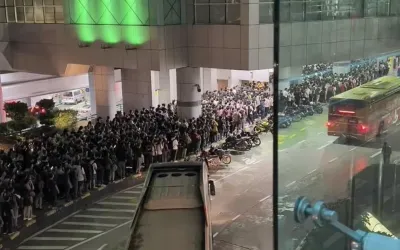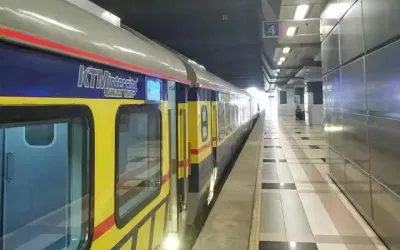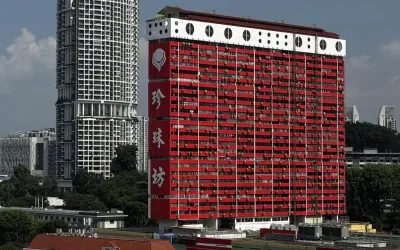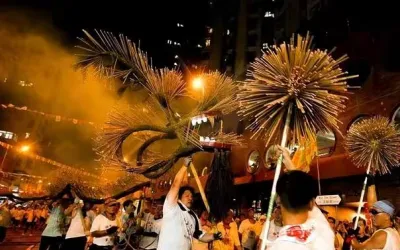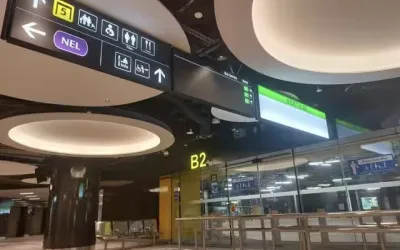在疫情初期,新加坡因能够有效控制感染人数一度被世界卫生组织称赞为“防疫典范”。在二月份时,新加坡曾成功将每日新增的感染人数控制在个位数。世卫总干事谭德塞甚至评价新加坡的检测达到”无漏网之鱼“的水平。然而自2020年3月底开始,随着疫情开始大规模爆发,新加坡抗疫的盲点浮出水面:被边缘化的三十万客工(外来劳工)。
In the early days of the COVID-19 crisis, Singapore was held up as a role model for its battle against the coronavirus. In the words of WHO Director-General Tedros Adhanom Ghebreyesus, Singapore’s public health response was “leaving no stone unturned”. By April, however, Singapore’s blind spot became startlingly clear. For all its strengths, Singapore’s government had neglected a community vital, yet peripheral, to Singaporean society - its over 300,000 migrant workers.
新加坡在4月底成为东南亚确诊个案最多的国家。这第二波的爆发主要来源于在拥挤的客工宿舍形成的感染区。(详见新加坡单日新增首次破百;新增198,累计突破2000 | 客工群体面临爆发危险)
许多新闻社论评价称新加坡在疫情初期对客工这一群体的忽视是这次群体性爆发的主要原因。(例如:因忽视抗疫盲点 新加坡付出高昂代价)
路透网的数据显示,截至5月17日,客工宿舍的确诊人数达到25,525人,占总确诊人数的90%。
Singapore was soon struggling to contain an infection spread centred around foreign worker dormitories. After reporting single-digit numbers daily in February, by April Singapore had the highest number of reported COVID-19 infections in Southeast Asia. By May 17, Reuters reported that the number of confirmed cases in foreign worker dormitories had reached 25,535 - 90% of the total.

图表来自路透社
为了控制客工宿舍感染的扩大,新加坡政府于四月初成立专门工作小组,旨在加强客工宿舍的防疫措施。采取的措施包括大批量的检测(每天3千人),将感染区隔离,以及疏散健康的客工、为他们安排一些更加宽敞的居住场所。然而在这样的措施之下,客工群体的新增确诊人数仍居高不下。截至7月18日,客工宿舍的确诊人数达到44,719,占总确诊人数的94%。(详见累计47655|部长提示谨防疫情反扑)
不过检测的普及度也是这个数字背后的原因之一。7月14日,新加坡卫生部称已完成21万人次的客工宿舍人员检测,占客工宿舍人员总数的三分之二。并预计于8月中旬完成全部客工宿舍人员的检测。
In early April, Singapore’s government formed an inter-agency task force to, in the words of Prime Minister Lee Hsien Loong, “handle the situation in the dorms”. The task force set up medical facilities and triage clinics, provided food and WiFi for workers stuck in dormitories, isolated infected patients in specially designated facilities, and conducted large-scale testing of up to 3000 persons per day. The high testing rate is undoubtedly a factor, but case numbers in foreign worker dormitories continued to soar. As of 18 July 2020, Singapore has recorded 47,655 cases in a country of about 5.8 million, with 44,906 cases, or 94%, detected in foreign worker dormitories.

新加坡军医在客工宿舍建立的检测点为一名客工进行检测(图片来自网络)
Here, Army Medical Services personnel attend to a foreign worker at a medical facility set up within the dormitories.
背景聚焦
“客工”或“外籍劳工”这个群体因新加坡疫情的二次爆发而受到关注,只是这个关注来得有点晚。客工指的是哪些人?他们为什么来新加坡?他们的生活是什么样的?这个星期,我们聚焦新加坡客工面临的问题和挑战。
Singapore’s wave of COVID-19 infections has finally drawn the country’s attention to the plight of its migrant labor population, catalysing much-needed reflection from Singapore’s government and its citizens. But who are Singapore’s migrant workers? Why are they needed? How do they live? This week, we spotlight these migrant workers and the myriad challenges they face.

图片来自网络
新加坡的客工是谁?
Who Are Singapore’s Migrant Workers?
新加坡客工一般指来自印度、孟加拉国或者中国的低收入工人,他们通过申请工作准证(work permit)来到新加坡,大多从事建筑和保洁相关的“脏、累、险”工作,又被称为“3D(dirty, dangerous or difficult)”工作。和颁发给所谓高端人才的工作签证(work visa)不同,工作准证是专门为从事对技能要求较低的“低端”劳动力设置的,而且对持证者的限制更多:他们不可以带家人一起来新加坡,只能通过企业申请工作准证,且在持证期间不能变更工作。因为不能更换工作,雇主若无理剥削,客工也无从伸冤。在这样不平等的制度之下,客工这一群体在新加坡社会的边缘化也不足为奇了。
In Singapore, the term “migrant worker” refers to low-wage laborers who hail largely from India, Bangladesh, and China. They hold Work Permits, a visa category that affords fewer privileges than the work visas given to highly skilled “expatriates”. Work Permit holders are, for example, not allowed to bring family with them to Singapore or to switch jobs, which leaves them vulnerable to abuse and exploitation by their employers. Most of them work in construction or public sanitation, jobs that most Singaporeans characterize as “3D” (dirty, dangerous or difficult). Due to the structural inequalities built into this employment system, migrant workers tend to lead a marginalized existence in Singaporean society.

数据来源:新加坡政府于2019年12月公开的信息
新加坡为什么需要客工?
Why Does Singapore Rely on Migrant Workers?
新加坡对客工的需求主要来自这两个原因:人口问题和劳动力结构的变化。近20年内,新加坡生育率不断减少,目前已降至1.16%,是全球生育率最低的国家之一。因此本地人口已不足以支撑新加坡经济的发展。再加上本地人大多接受了良好的教育,对工作比较挑剔,择业时往往会将“3D工作”排除在外。而帮助新加坡填补这些行业的劳动力缺口的正是客工。换句话说,新加坡向以知识密集型高科技产业和服务业为主导的“知识型经济(knowledge-based economy)”的转型,完全离不开客工。新加坡贸易和工业部2004年的一份研究指出,在1992-1997年新加坡经济以年平均9.7%的增长率快速发展的时期,客工对经济增长的贡献高达29.3%。这个数据或许有些过时,但依然直观地展示了客工对新加坡的贡献。
Singapore’s demand for migrant workers is largely fueled by two key drivers: a shrinking domestic population and a local aversion to so-called “3D” jobs. Singapore’s fertility rate has been falling for the past 20 years, and at 1.16% registers as one of the lowest in the world. This has caused Singapore’s already-limited population to shrink, resulting in more job openings than the local population is able to fill alone. Singapore’s economy thus relies heavily on migrant labor, particularly for “3D jobs” that most Singaporeans would refuse to consider. But while jobs in the construction or public sanitation sectors are generally seen as undesirable by Singaporeans, they nevertheless constitute essential functions that support Singapore’s economy. For example, a 2004 survey by the Ministry of Trade and Industry found that between 1992 and 1994, migrant workers’ contribution to Singapore economic growth was almost 30%.
客工在新加坡的境遇如何?
How Are Migrant Workers Treated?
尽管新加坡3D问题的解决以及经济发展都离不开客工,他们的贡献并未得到社会的认可,客工群体与本地的社群之间仍然存在巨大的鸿沟。很多新加坡人还是有仇外心理,认为客工占用了本国人的经济资源。对客工的不满甚至在2011年成为政府选举的主要政治议题,使得政府对客工设置了更多的限制。时至今日,新加坡人对客工仍然抱有敌意:尽管有70%的新加坡人意识到国内存在劳动力短缺的问题,只有四分之一的人认可客工对国内经济发展的重要性。
Despite Singapore’s reliance on migrant workers, their relationship with the Singaporean community is tenuous, marred by racism and xenophobia. Discontent with the influx of low-wage migrant laborers was a key issue in the country’s 2011 general election, causing the government to tighten its immigration and foreign labor policies. Even today, Singaporeans are still not open to migrant labor: surveys show that just one in four Singaporeans says there is a need for migrant workers, even though seven in ten agree that there is a labor shortage.
由于无法融入当地社群,客工始终生活在社会的边缘。2013年12月,新加坡发生了40年来首起客工骚乱事件。骚乱的起因是一名印度籍客工被一辆私人巴士撞倒身亡。这起事故引发了涉及300多名客工的骚乱,进一步激化本地社群对客工的偏见。
Migrant workers do not just face social ostracization - they also live on the physical periphery of the local community. Unfounded concerns about the safety of the elderly, the young, and property devaluation fueled a “not in my backyard” mentality that kept workers on the periphery of local residential estates.


